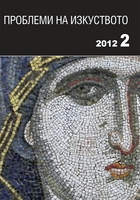Византийската елитна къща: антично наследство и средновековна идентичност
The Byzantine Elite House: Classical Heritage and Medieval Identity
Author(s): Julia ValevaSubject(s): Cultural history
Published by: Институт за изследване на изкуствата, Българска академия на науките
Summary/Abstract: Late Antiquity was crucial for the transmission of elements of classical elite house architecture and décor into the Early Middle Ages. A good number of elite houses in the eastern provinces constructed during the 2nd and 3rd centuries continued to be familial residences throughout the centuries preceding the Arab conquest. Their peristyle plan was much appreciated for the facilities and pleasure it provided, while their painted, mosaic and sculpture decoration continued for centuries. This was a stable and most persuasive way of education in classical aesthetics and style. However, new buildings of importance for the development of elite domestic architecture appeared in Late Antiquity as well. The residence of Diocletian in Spalato-Split (ca. 300 AD) illustrates some features of elite house construction and design that became basic in the Middle Byzantine period: the move of the apartments to the first floor, the vaulted roofing of the premises, the luxurious gallery looking out over the sea (in other monuments onto a river or a vast landscape). At the same time rooms like the triclinium and the apsidal audience hall continued to be the core of the official quarters. Our information about the residences of the members of the imperial family of Theodosius (end of 4th and 5th centuries) is unfortunately statistical and not descriptive. There is, however, another relevant piece of evidence – the domestic architecture of the well- to-do families in Southern Syria, dating from the 5th-6th centuries. These houses were built of stone, were often multistorey, with wide windows in the dwelling rooms, balconies and terraces; the ground floors were used as stables, stores, and workrooms. At present the archaeological evidence from the Middle Byzantine period is rather scarce. Iconography is of help for the reconstruction of the domestic architecture in spite of its conventionality. There is also a very important Byzantine textual source: the description of the palace of Digenes Akrites, a legendary hero of a high military rank, whose life and deeds are extolled in the epic Akritic songs that emerged in the period of the Macedonian dynasty. The palace, as it is described, is a combination of inherited elements of a classical luxurious residence (a park with flowers and birds, marble revetment of the walls, depictions of mythological subjects in the triclinia) and typical Byzantine features (multi-storey structures, vaulted rooms,decoration in opus sectile, mosaic decoration of walls and a distinct colourfulness).
Journal: Проблеми на изкуството
- Issue Year: 2012
- Issue No: 2
- Page Range: 10-15
- Page Count: 6
- Language: Bulgarian
- Content File-PDF

